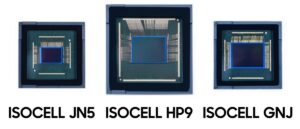Introduction
In the ever-evolving landscape of technology, the realm of VLSI (Very-Large-Scale Integration) design verification is undergoing a transformative shift, thanks to the emergence of Generative AI (Gen AI).
Gen AI, short for Generative Artificial Intelligence, is a powerful subset of artificial intelligence that leverages neural networks to create new and original content by identifying patterns and structures within existing data.
Its impact on the VLSI design verification industry is profound, bringing automation, efficiency, and innovation to a field known for its intricacies and challenges.
Automating Test Generation
One of the core disruptions introduced by Gen AI in the VLSI design verification industry is the automation of test case generation. Traditionally, manual test case development was a time-consuming process that required significant effort.
With Gen AI, this process is revolutionized. By analyzing vast amounts of data, Gen AI models can intelligently generate test cases that are optimized to uncover potential bugs in the design. This not only accelerates the verification process but also enhances the quality of testing by exploring a broader range of scenarios.
Enhancing Debugging Efficiency
Gen AI’s impact extends further into the debugging phase of VLSI design verification. Debugging is a critical and often painstaking process, as engineers strive to identify and rectify issues.
Gen AI comes to the rescue by providing valuable insights and suggestions regarding potential causes of bugs. This feature significantly reduces the time required to diagnose and correct issues, ultimately shortening the time-to-market for new products.
Improving Coverage Analysis
Coverage analysis is another crucial aspect of VLSI design verification. Ensuring that every corner of a complex design is thoroughly tested is a formidable challenge. Gen AI addresses this challenge by identifying areas of the design that may not be adequately covered by existing test cases.
By enhancing coverage analysis, Gen AI enables engineers to achieve a more comprehensive and robust verification process, minimizing the risk of undiscovered bugs lurking within the design.
Fostering Communication and Collaboration
Effective communication and collaboration between verification engineers and stakeholders are essential for successful VLSI design verification. Gen AI plays a pivotal role in bridging gaps and fostering synergy among different teams.
By providing actionable insights and suggestions, Gen AI facilitates clearer communication, enabling teams to address concerns promptly and work harmoniously towards a verified design.
Read more: Learn AI or Die: Semiconductor Professionals
Real-World Examples
The impact of Gen AI in the VLSI design verification industry is already evident through notable examples:
Cadence Design Systems: The Verisium AI-Driven Verification Platform automates test generation, enhances coverage analysis, and streamlines debugging processes using Gen AI.
Synopsys: The DesignWare Verification IP Suite incorporates Gen AI-powered features such as a machine learning-based fault detector and a coverage optimization engine.
Mentor Graphics: The Questa AI Verification Platform utilizes Gen AI to automate test case generation, identify potential bugs, and improve debugging efficiency.
Challenges and Future Prospects
While Gen AI holds immense potential, several challenges must be overcome for its widespread adoption in VLSI design verification:
Data Availability: Gen AI models demand substantial amounts of training data, which can be scarce and expensive, particularly for new designs.
Model Complexity: Complex Gen AI models may pose difficulties in understanding and debugging, potentially slowing down the verification process.
Interpretability: Ensuring transparency in decision-making by Gen AI models is essential, yet complex models can make interpretability a challenging task.
Conclusion
Generative AI is ushering in a new era of efficiency, innovation, and automation in the VLSI design verification industry. Through automating test generation, enhancing debugging efficiency, improving coverage analysis, and fostering communication, Gen AI is set to redefine how VLSI designs are verified.
Despite existing challenges, the transformative potential of Gen AI cannot be underestimated. As technology matures and obstacles are addressed, Gen AI is poised to become an indispensable tool, enabling engineers to navigate the complexities of VLSI design verification with greater speed, accuracy, and confidence.








